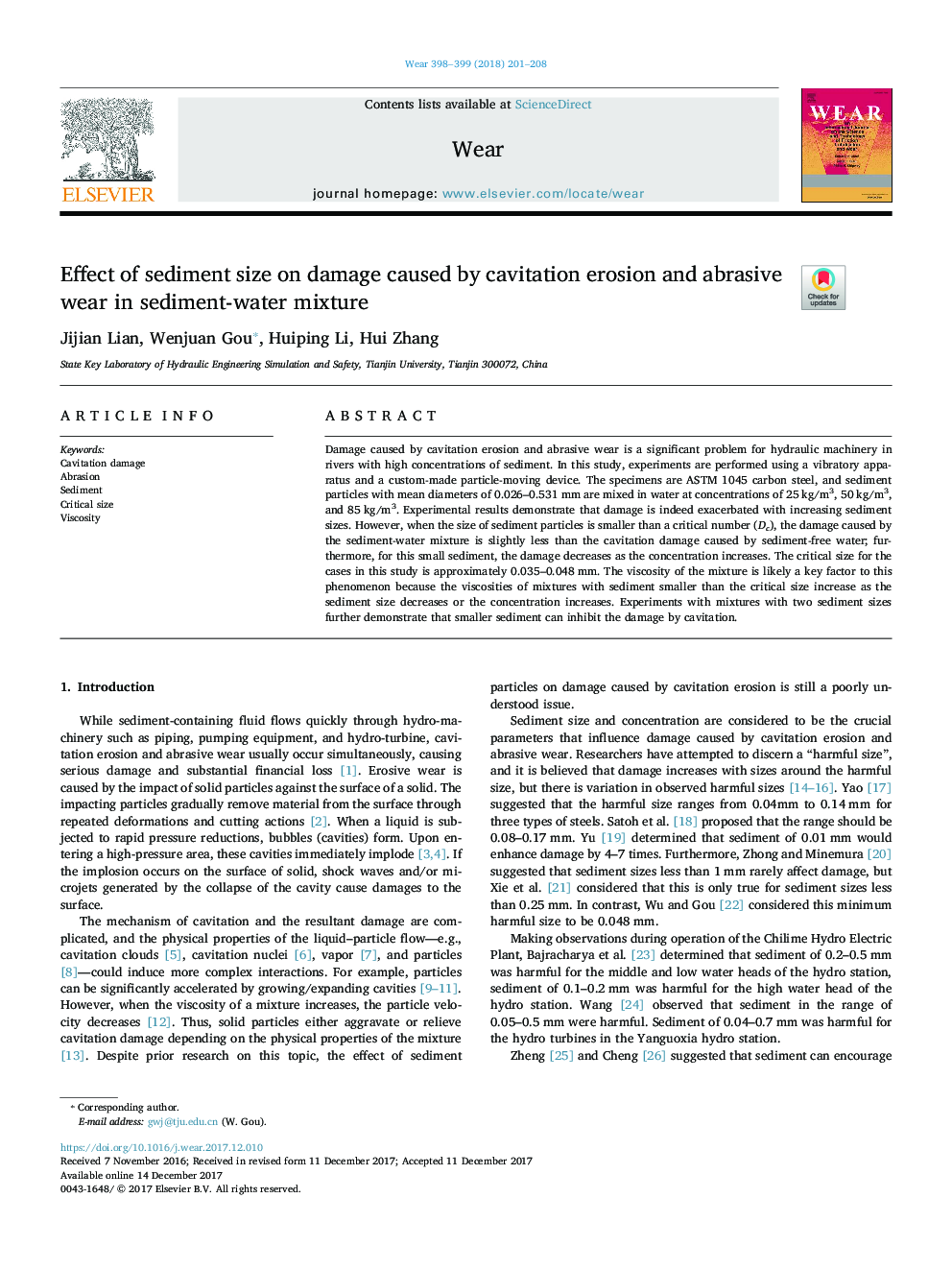| Article ID | Journal | Published Year | Pages | File Type |
|---|---|---|---|---|
| 7004008 | Wear | 2018 | 8 Pages |
Abstract
Damage caused by cavitation erosion and abrasive wear is a significant problem for hydraulic machinery in rivers with high concentrations of sediment. In this study, experiments are performed using a vibratory apparatus and a custom-made particle-moving device. The specimens are ASTM 1045 carbon steel, and sediment particles with mean diameters of 0.026-0.531Â mm are mixed in water at concentrations of 25Â kg/m3, 50Â kg/m3, and 85Â kg/m3. Experimental results demonstrate that damage is indeed exacerbated with increasing sediment sizes. However, when the size of sediment particles is smaller than a critical number (Dc), the damage caused by the sediment-water mixture is slightly less than the cavitation damage caused by sediment-free water; furthermore, for this small sediment, the damage decreases as the concentration increases. The critical size for the cases in this study is approximately 0.035-0.048Â mm. The viscosity of the mixture is likely a key factor to this phenomenon because the viscosities of mixtures with sediment smaller than the critical size increase as the sediment size decreases or the concentration increases. Experiments with mixtures with two sediment sizes further demonstrate that smaller sediment can inhibit the damage by cavitation.
Related Topics
Physical Sciences and Engineering
Chemical Engineering
Colloid and Surface Chemistry
Authors
Jijian Lian, Wenjuan Gou, Huiping Li, Hui Zhang,
